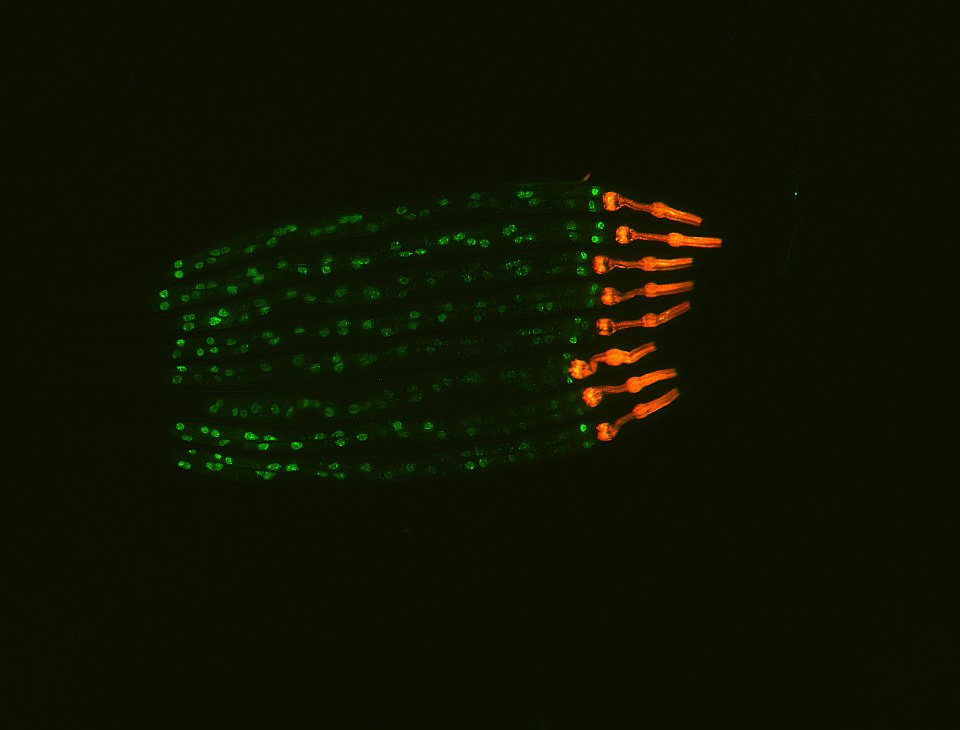Breaking Tithonus’s curse of immortality: from a Greek myth to modern lab findings
In ancient Greek mythology, Eos the goddess of dawn fell in love with a mortal named Tithonus. Hoping never to lose him, she asked Zeus, the god of sky and thunder, to grant Tithonus eternal life.
By Mahsa Golshani NasabPhoto: iStockphoto.com
Eos’s wish was granted, but with a cruel twist: Tithonus didn’t gain eternal youth. Instead, he was trapped in an endless cycle of decay and aging for centuries.
The tragic tale of Tithonus warns us that immortality is meaningless without health and vitality. Today, modern science faces a similar challenge: extending our years of good health rather than simply adding more years to life.
At the University of Saskatchewan (USask), I’m part of a small research team led by Dr. Michael Wu, an associate professor in the Western College of Veterinary Medicine (WCVM). We’re studying Caenorhabditis elegans (C. elegans), a transparent roundworm so small that one might overlook it in a handful of soil.
Despite its tiny size, this intriguing roundworm offers a vastly unique window into the aging process. In its short lifespan of only a few weeks, we can observe how it grows, reproduces and ages quickly — lessons that might take decades to learn in more complex animals.
One fascinating feature of C. elegans is its ability to enter a state known as the “dauer stage.” When conditions become stressful due to overcrowding, high temperatures or a lack of food, the worm can put its development on hold. In this state, its growth stops and metabolism slows dramatically, allowing the worm to survive for many weeks or even months — far beyond its normal adult lifespan.

What’s even more exciting is that when conditions improve, these worms can leave the dauer stage and return to normal growth. In a sense, it’s almost as if they can control their aging process by keeping essential functions intact during harsh conditions. In its own way, this worm shows us that aging can be adjusted or slowed down.
One key area of our research focuses on histones — small, marble-like proteins that act as spools, which neatly wind up DNA. Each cell in a body contains a library of genetic instructions, and histones help organize this manual so the cell can find the correct information at the right time.
But when histones malfunction, the biological “pages” can be lost or misread. These issues can lead to errors in gene expression and reduced ability of cells to repair damage — ultimately contributing to the decline in cellular function that we see as aging.
In our research lab, we’re investigating what happens when we modify the genes responsible for processing histones in C. elegans. Potentially, our findings could have significant implications for human health.
Although humans are far more complex, we share many biological similarities with C. elegans. Researchers have been exploring drug treatments, dietary changes and other interventions that might mimic the worm’s genetic advantages in other models and humans.
Just as Tithonus became a symbol of endless decay, our research strives to create a new contrasting symbol — one of possibility and renewal. Rather than simply stretching life out, we're exploring ways to preserve essential biological functions through proper histone regulation, potentially extending the years we remain healthy and active.
Perhaps our work will help write a different ending, transforming the cautionary tale of Tithonus from a warning into a distant myth and offering a brighter future than we ever imagined.
Mahsa Golshani Nasab of Tabriz, Iran, is a master’s student based at the Western College of Veterinary Medicine (WCVM). Her graduate supervisor is Dr. Michael Wu, associate professor in the WCVM’s Department of Veterinary Biomedical Sciences.
